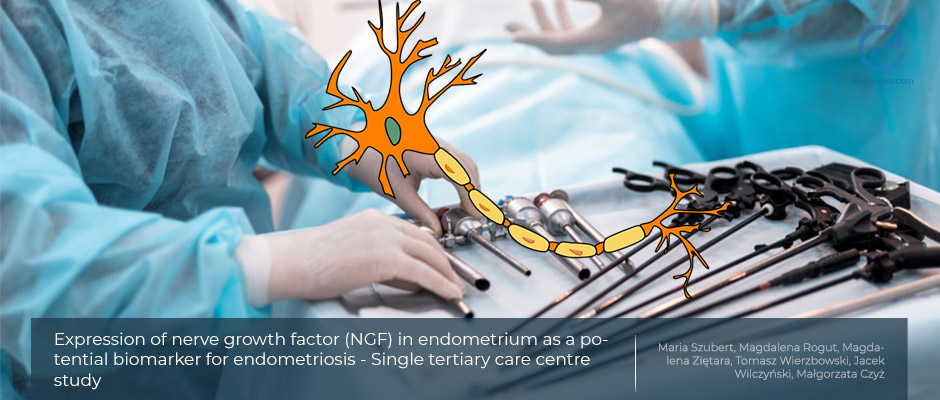It is time for non-invasive tests for peritoneal endometriosis diagnosis
Oct 19, 2020
Eutopic endometria of peritoneal endometriosis patients yield lower levels of nerve growth factor mRNA
Key Points
Highlights:
- There is a need to find new non- or less-invasive diagnostic test modalities for peritoneal endometriosis rather than laparoscopy, the golden standard of current clinical practice.
Importance:
- Any minimally invasive diagnostic test would have potential benefits for both the endometriosis patients and gynecology clinics by decreasing the burden of laparoscopies.
What's done here:
- Eutopic endometria from patients with a presumptive diagnosis of endometriosis who had laparoscopically diagnosed peritoneal endometriosis (n=33) and controls (n=11) were analyzed.
- Since parameters including growth factor levels vary during the menstrual cycle, only specimens of the early phase of the cycle were included in the study.
- Tissue samples homogenized mechanically, total RNA isolated, and was transcribed into cDNA using reverse transcriptase.
- The evaluation of mRNA expression of selected genes was performed by the quantitative real-time polymerase chain reaction.
Key results:
- Aromatase, interleukin 8, vascular endothelial growth factor, and platelet-derived growth factor mRNA expressions did not show a difference between healthy women and peritoneal endometriosis patients.
- However, nerve growth factor mRNA expression was significantly decreased in endometriosis patients, yielding a possible role in early diagnosis of peritoneal endometriosis.
Limitations of the study:
- Although a nerve growth factor-based test could be informative for physicians, it brings a question of whether the change in probability is large enough to enable accurate diagnosis.
- A second major drawback is the single-center nature of the study and inherent potential bias resulting from the recruitment of a healthy control group.
Lay Summary
Maria Szubert with colleagues from Lodz Medical University, Poland, investigated the possibility of potential diagnostic biomarkers in the eutopic endometrial tissue from peritoneal endometriosis patients and published their results in the "Journal of Gynecology Obstetrics and Human Reproduction".
Currently, diagnostic laparoscopy is the golden standard procedure to prove peritoneal endometriosis since it is not visible either on ultrasound or MRI. There is a need to have a contemporary non- or less-invasive diagnostic tool for patients with a presumptive diagnosis of peritoneal endometriosis.
Since the concentration of several molecular parameters may vary during the menstrual cycle, only the endometria from the early phase of the cycle were included in the study. Eutopic endometrial tissues from 33 patients with laparoscopy proven peritoneal endometriosis were analyzed and compared to specimens of a control group, consisting of 11 women.
mRNA expression of vascular endothelial growth factor-A, nerve growth factor, aromatase, interleukin 8, and platelet-derived growth factor A genes in eutopic endometrium of patients with peritoneal endometriosis was assessed. Endometrial tissue samples homogenized mechanically, total RNA isolated, and was transcribed into cDNA using reverse transcriptase. The evaluation of mRNA expression of selected genes was performed by a quantitative real-time polymerase chain reaction.
Although mRNA expression of other factors did not show a significant difference between healthy women and patients with peritoneal endometriosis, Nerve growth factor expression was significantly decreased in the endometria of women with endometriosis.
This finding is yielding a possible role for the Nerve growth factor as a biomarker in early diagnosis of peritoneal endometriosis. The authors conclude by suggesting that prospective studies should have subgroups according to the main symptom: infertility or pain as the presence of nerve fibers in the functional layer of endometrium could be associated more with pain.
Research Source: https://pubmed.ncbi.nlm.nih.gov/32827836/
Eutopic endometrium endometriosis NGF PDGF ARO laparoscopy peritoneal CDCX8 PDGF pain infertility

